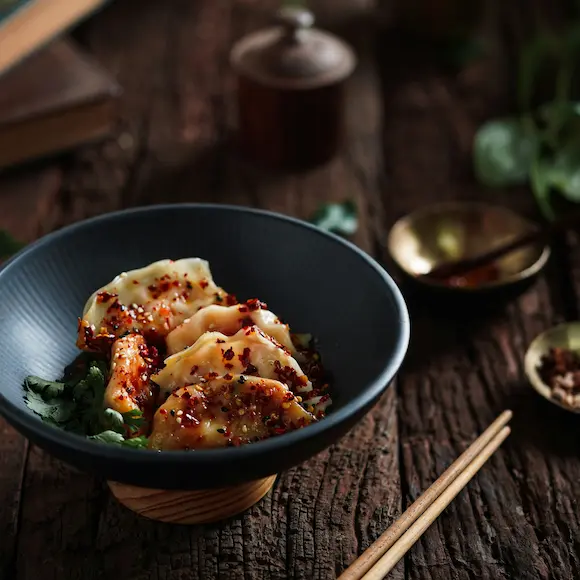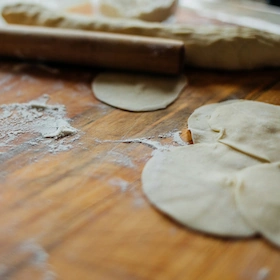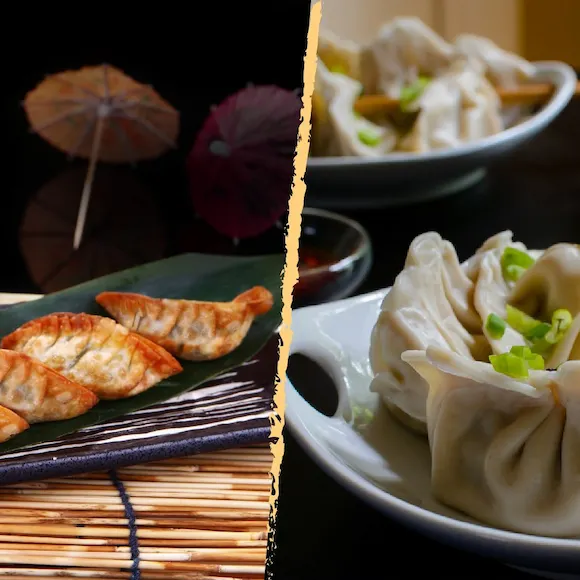Journey of the dumpling
Dumplings in chinese families
New Year's Eve in Chongqing, my family gather together to make dumplings with different ingredients.
At midnight, mom will cook chinese dumplings. Everybody’s taste buds will be awakened by the
dumplings that
have just come out of the pot. People in a hurry will be scalded by the soup to the scream, which
bring a lot of laughter to everyone. Family members together are like making dumplings. They reunite
and tolerate each other, so that every New Year is full of impressive memories, just like when I was
a child.
Dough Recipe Giveaway
To make dumpling wrappers, you need flour, water, salt, and a bit of yeast. Gradually add the
appropriate amount of water and salt to the flour, mixing well with chopsticks or a spatula,
then knead with your hands. This step helps release gases in the dough. Knead until the
rough dough becomes smooth. Once kneaded, place it in a bowl, cover with plastic wrap, and
let it rest to ferment. The longer the dough rests, the softer it will become. Chinese chefs
call this magic: transforming flour into a dough as soft as an earlobe. Then, roll the dough
into a long strip and cut it into small pieces. Finally, use a rolling pin to flatten each
piece into a circle. Be sure to sprinkle dry flour on the work surface to prevent the dough
from sticking. This is a skillful task, but with practice, you can become a master of dough
control!
What is inside the dumplings?
The great thing about dumplings is their versatility; they can satisfy everyone's taste, no
matter the flavor. You can let your imagination and preferences run wild by mixing ground
beef, pork, or even seafood with various vegetables like scallions, chives, cabbage,
carrots, zucchini, and celery... the possibilities are endless. Pair them with soy sauce,
vinegar, or chili oil. Different combinations can help you find the sauce that suits you
best. If you have a sweet tooth, you can even make dessert dumplings using common fillings
like red bean paste, black sesame, custard, and sweet taro. Both sweet and savory dumplings
are beloved flavors.
The distinction between dumplings and gyoza
Although dumplings and gyoza are quite similar, their flavors, textures, and cooking techniques are
distinctly different. The history of Chinese dumplings dates back over a thousand years. Chinese
dumplings typically have more dough and thicker wrappers, making them ideal for boiling or steaming.
In contrast, Japanese gyoza is a more recent invention. During World War II, some Japanese people,
having tasted dumplings after occupying Manchuria, sought to create gyoza using Japanese
ingredients. As a result, Japanese gyoza has thinner wrappers and finely chopped fillings. The most
common cooking method is pan-frying, and gyoza are usually smaller than Chinese dumplings, about one
bite in
size.





